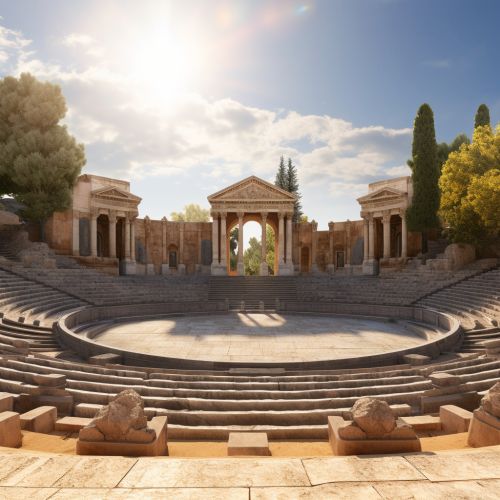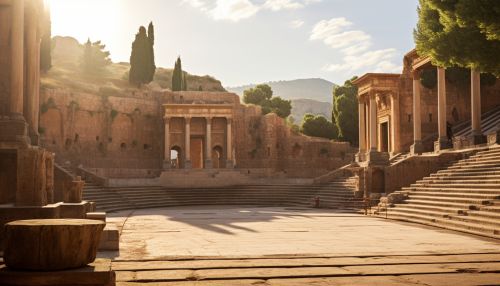Skene
Origins and Etymology
The term "Skene" originates from ancient Greek theatre and is derived from the Greek word "σκηνή" (skēnē), which translates to "tent" or "hut". It was used to describe a specific part of the theatre in ancient Greece, where actors would change their costumes and masks. The skene was usually a two-story building situated behind the orchestra, which was the main performance area in the theatre. It was an essential part of the theatre structure, providing a backdrop for the action on stage and a place for actors to prepare for their performances.
Structure and Function
In the context of ancient Greek theatre, the skene was a vital part of the stage. It was typically a rectangular building with three doors that led onto the orchestra. These doors were used by the actors to enter and exit the stage, and they also served as entrances to imaginary locations within the play. The skene was often painted with elaborate scenes that reflected the theme or setting of the play, adding a visual element to the performances.
The structure of the skene evolved over time. In the earliest Greek theatres, the skene was simply a tent or hut, used for storage and as a dressing room for the actors. By the 5th century BC, the skene had become a permanent, substantial building. In the classical period, the skene was often a two-story structure, with the upper level used for displaying theatrical scenery.
The function of the skene also evolved over time. In the earliest days of Greek theatre, the skene was primarily a practical structure, used for storage and as a dressing room. However, as theatre developed, the skene became an integral part of the theatrical performance. It provided a backdrop for the action on stage, and its doors and levels were used to create a variety of dramatic effects.
Influence on Modern Theatre
The skene has had a significant influence on the development of modern theatre. The concept of a backstage area, where actors can prepare for their performances and change costumes, is a direct descendant of the ancient Greek skene. The use of the skene as a backdrop for the action on stage has also influenced modern stage design, with many theatres featuring a proscenium arch that frames the stage and provides a backdrop for the performance.
The use of doors in the skene to represent entrances to different locations has also influenced modern theatre. This concept is seen in the use of "flats" or movable pieces of scenery in modern stage design. These flats can be moved on and off stage to suggest different locations, much like the doors of the ancient Greek skene.
See Also


